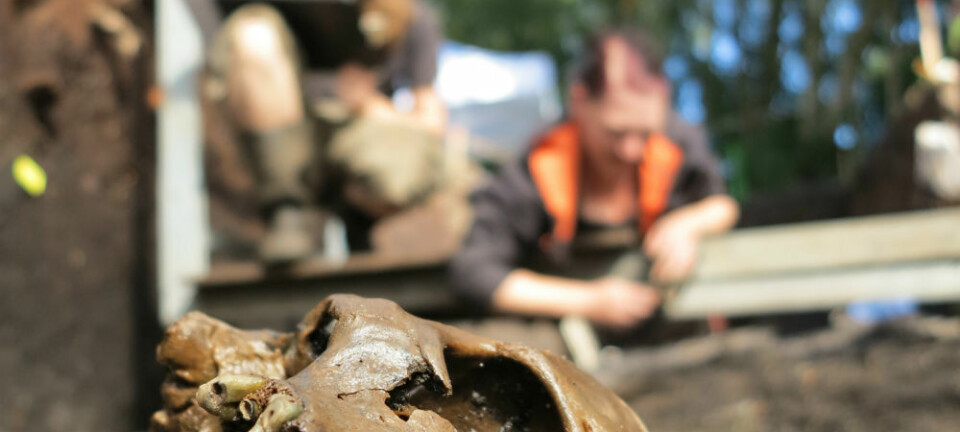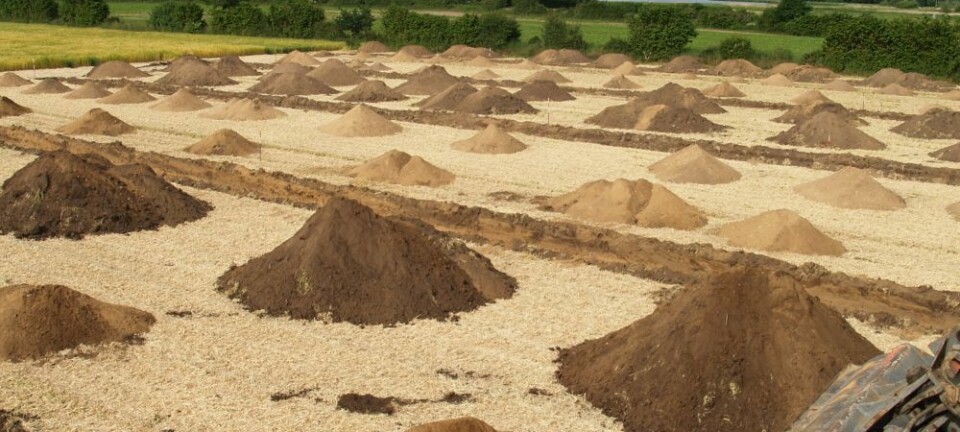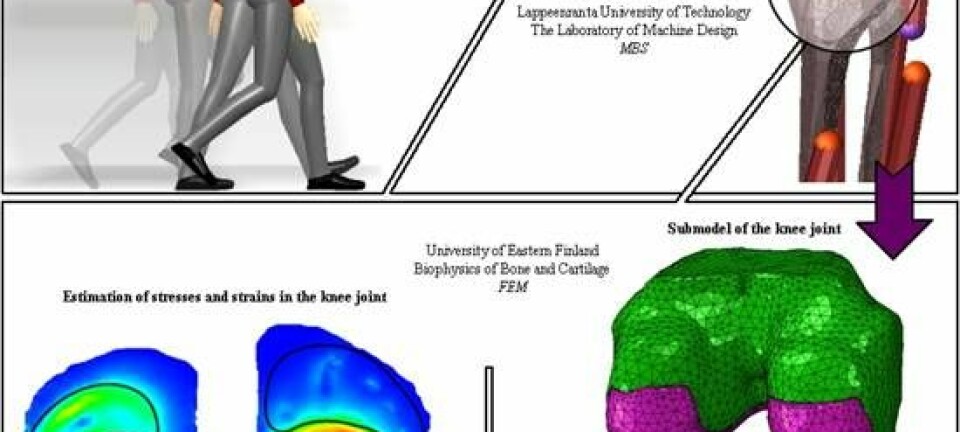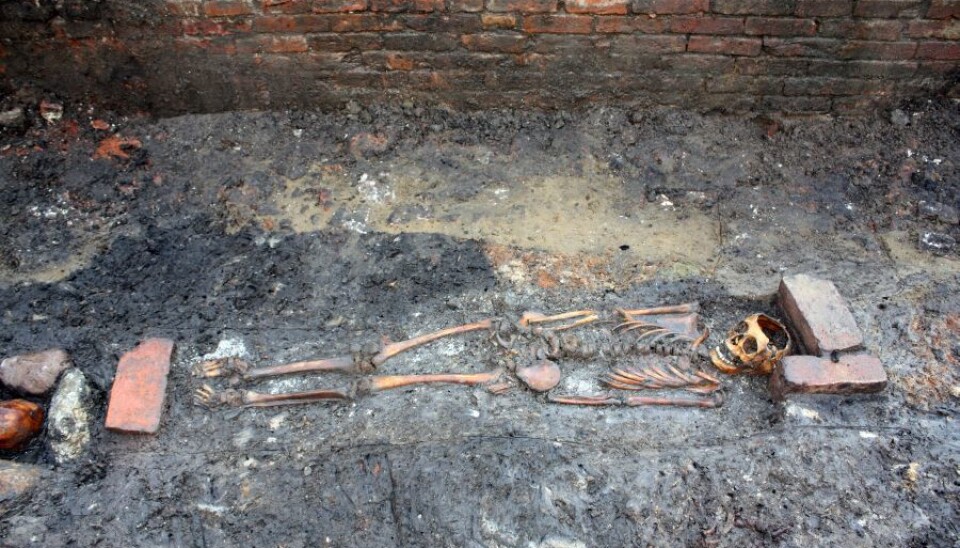
Decomposed organs reveal skeletons’ last days
Mercury analyses of the soil surrounding medieval skeletons reveal how the deceased spent their last days. The discovery may change the way archaeological excavations will be carried out in the future.
A startling new study reveals that the soil surrounding centuries-old skeletons contains information about how the deceased people spent their last days on Earth.
Bone analysts have studied the soil around skeletons dug up in two Danish towns. The analyses revealed that the soil contains mercury, which was present in the deceased people’s lungs, kidneys and livers at the time of death.
The amount of mercury in the soil can tell archaeologists whether the deceased were in medical treatment when they died. This is because the bacteria-killing mercury was used as medication as far back as the Roman times and all the way up to the start of the 20th century.
”These new findings enrich our history. Take for instance the skeleton of the child in Ribe in grave X1114 [see below]. Here we found mercury in the soil surrounding the skeleton, we can conclude that the child suffered from a serious disease, which was probably visible on the child’s skin,” says Associate Professor Kaare Lund Rasmussen, of the Department of Physics, Chemistry and Pharmacy at the University of Southern Denmark.
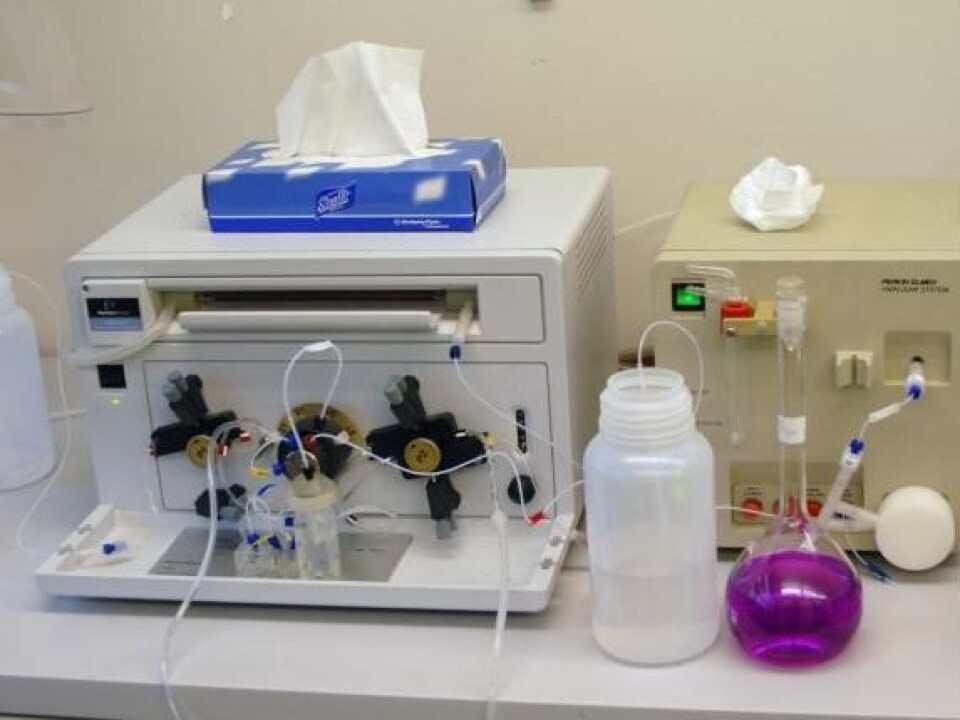
“Someone has wanted to help the child – most likely its parents – and they gave the mercury to the child. This gives us a few pieces for constructing a history for the person we have found.”
Rasmussen is the lead author of the new study, which is published in the journal Heritage Science.
Sick child treated with mercury
Rasmussen and his colleagues took part in the recent archaeological excavations of
- The 800-year-old medieval cemetery Lindegaarden at Ribe Cathedral, Denmark.
- The cemetery in Ole Wormsgade street in Horsens, Denmark, which was used in the period between 1250 and 1536. The researchers examined a total of 19 skeletons, one of which was the 10-13 year-old child mentioned above.
We’re using this technology in a new way. Of course, researchers have also previously made soil analyses in environmental chemistry. But the way we have used the technology in this latest study is brand new.
Kaare Lund Rasmussen
By analysing the child’s bones for mercury – which is a common method in archaeology – Rasmussen found that the child had been in mercury treatment a couple of years prior to its death.
And having conducted the new analysis of the soil surrounding the child’s body, he could see that the child was treated again in the days leading up to its death.
”I imagine that the child was ill, that the family tried to cure it with mercury, that it may have gone well for a while, but that the child suffered a serious relapse and was given a hefty dose of mercury which, however, did not save the child’s life.”
New way of analysing archaeological finds
The technology used for extracting secrets out of the soil is known as ‘’Cold Vapour Atomic Absorption Spectroscopy’ (CV-AAS).
Suddenly it’s no longer just the skeleton that’s interesting.
Kaare Lund Rasmussen
This method of analysis has been around for a few decades, but this is the first time that it is being used in connection with soil analysis from archaeological excavations.
“We’re using this technology in a new way. Of course, researchers have also previously made soil analyses in environmental chemistry. But the way we have used the technology in this latest study is brand new.”
Mercury remains in the soil long after death
The analysis can contribute with interesting information about the deceased people’s last day on Earth, because mercury doesn’t degrade in the same way as the rest of the substances in the human body.
- When the child was put in its grave some 800 years ago, the organs and muscles rotted away quite quickly. All the salts and other substances in the body at the time were absorbed into the soil, and after a few years they were washed away by the rain that seeped down into the soil.
- However, the body’s mercury contents remained in the soil around the skeleton. The mercury bound to the sulphur in the soil and was converted into mercury sulphide, which was so insoluble that it couldn’t be washed away by the groundwater.
How the technology works
After 800 years, the skeleton was found by archaeologists from Sydvestjyske Museer in Ribe and Horsens County Museum. Rasmussen took a soil sample, which he analysed using the CV-AAS instrument.
- The soil sample was first subjected to a potent cocktail of concentrated nitric acid, concentrated hydrochloric acid and 30 percent hydrogen peroxide. This mixture dissolves the mercuric sulphide in the soil and ionises the mercury. At the same time, the hydrogen peroxide breaks down the organic components of the sample – e.g. plant residues from the soil and what may remain of the soft parts of the body.
- The soil sample was then passed through a filter which weeds out sand and other unwanted materials such as clay minerals.
- The mercury, now ionised, was reduced to metallic mercury using a potent reducing agent. This evaporated the mercury, and with a gentle stream of argon it was passed on through the instrument. This gas stream contained argon with a small amount of mercury atoms.
- By means of a special lamp, the instrument sent light in through the gas – a light that has a wavelength corresponding to the one at which mercury is absorbed. Checking the light-absorption in the gas enabled the researchers to quantitatively measure the amounts of mercury in the soil.
Discovery may change excavation practices
Rasmussen reckons the new discovery can change the way archaeologists will be digging for skeletons in the future:
”If you have taken part in an archaeological excavation, you know that archaeologists spend a lot of time on laying out bones, picking them up and putting them into boxes so they can be analysed. It must be kept in mind that we are not interested in death, but the life before death,” he says.
“The soil, on the other hand, is usually just scooped up into a wheelbarrow and thrown away. This has been done for more than 100 years, but now suddenly we can also make some inferences about the deceased person based on soil samples.
“Suddenly it’s no longer just the skeleton that’s interesting.”
-----------------------
Read the Danish version of this article at videnskab.dk
Translated by: Dann Vinther
Scientific links
External links
- Kaare Lund Rasmussen's profile
- About the Cultural Heritage and Archaeometric Research Team at the University of Southern Denmark
